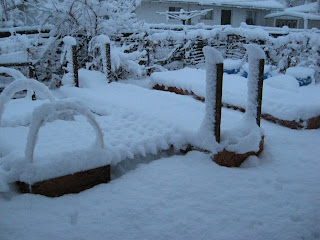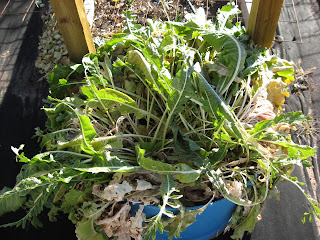During the summer, I saved tomato seeds off of my plants that did well. Here are a couple that I am testing for germination purposes.
After collecting tomato seed from my non-hybrid tomatoes, I like to test a few to see how many germinate. I plant about 8-10 seeds of each variety that I collected during the summer, just to see how well they germinate.
I fill up a couple of pots with peat moss and wet the peat moss down real good. I count out 10 seeds and sprinkle them in the pots. Next, I sprinkle a light coating of peat moss right over the seeds about the depth of a half of a eraser on a pencil. Then, I get a water sprayer and mist it till the top is wet. I then cover it with saran wrap until the seeds start to germinate. Usually 3 to 4 days. I usually have a excellent germination rate much better than the tomato seeds I get from the stores, who would have thought.
I tell people that are starting to save seed to pick your nicest tomatoes for this and let them vine ripen until they are almost squishy, maybe not that bad but you know let them get dead ripe. Always save the best tomatoes for this. It keeps your line of that tomato the very best.
There are two variety's that I am checking right now. One is a old favorite of a lot of gardeners. Stupice Tomato it is a very early tomato its origination is from Czechoslovakia. A cold-tolerant tomato that bears an abundance of sweet, flavorful 2 to 3 inch tomatoes.
The next tomato has got to be one of my all time favorites it has been the most aggressive and productive plant that I have had since I started growing them it is the Chocolate Cherry.
The History of the Chocolate Cherry. It was developed by Aaron Whaley, of Seed Savers Exchange http://www.seedsavers.org/. He was trying to develop a tomato superior to the Black Cherry tomato more uniform tomatoes and keeping there great taste. Well I think he did beautifully the Chocolate cherry is a wonderful tomato great old fashion taste. If you like the taste of an old fashion tomato in the cherry size this is it.
I get more tomato for the buck with this tomato, I would suggest the Chocolate Cherry for anyone's garden.
Oh yeah, 100% germination for both, I am so happy that's what it's about....






































